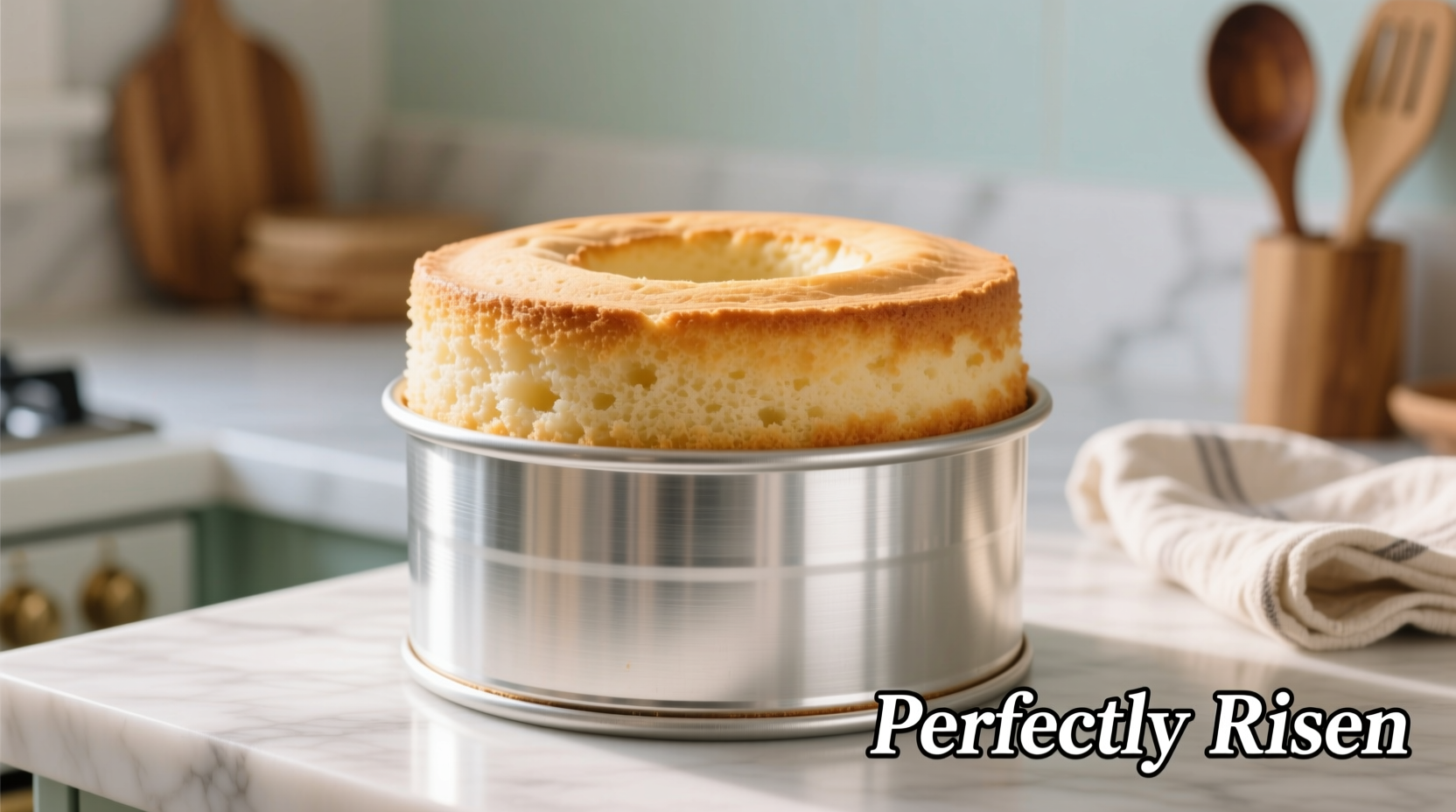The perfect angel food cake requires only 6 essential ingredients: egg whites, sugar, cake flour, cream of tartar, salt, and vanilla extract. Separate eggs when cold, beat whites to stiff peaks, and gently fold in sifted dry ingredients. Bake in an ungreased tube pan at 325°F for 35-40 minutes, then invert to cool completely before removal. This fat-free dessert achieves its signature cloud-like texture through proper aeration of egg whites and careful ingredient handling.
Why Angel Food Cake Is Different From Other Desserts
Unlike traditional cakes that rely on butter or oil for moisture, angel food cake gets its ethereal texture solely from properly whipped egg whites. This American classic dates back to the late 19th century when cookbooks like Miss Parloa's New Cook Book (1881) first documented the technique. The science behind its success lies in the protein structure of egg whites, which creates a stable foam that traps air during baking.
| Characteristic | Angel Food Cake | Traditional Sponge Cake | Butter Cake |
|---|---|---|---|
| Fat Content | 0% (fat-free) | 5-10% (from egg yolks) | 25-35% (butter/oil) |
| Leavening Method | Egg white foam only | Egg foam + chemical leaveners | Chemical leaveners + creaming |
| Texture | Light, airy, delicate crumb | Firmer, more elastic | Dense, moist |
| Shelf Life | 2-3 days | 3-4 days | 4-5 days |
Essential Ingredients and Why They Matter
Angel food cake's simplicity makes ingredient quality crucial. According to the FDA's nutrition guidelines, precise measurements ensure proper protein structure development. Here's what you need:
- Egg whites (10-12 large): Must be separated when cold for maximum volume. Room temperature whites incorporate more air during beating.
- Granulated sugar (1½ cups): Adds sweetness and stabilizes the foam. Superfine sugar dissolves more readily.
- Cake flour (1 cup): Lower protein content creates a more tender crumb than all-purpose flour.
- Cream of tartar (½ tsp): Acidic stabilizer that strengthens egg white foam structure.
- Salt (¼ tsp): Enhances flavor and strengthens protein bonds.
- Vanilla extract (1½ tsp): Adds flavor without deflating the batter.

Your Equipment Checklist
Professional results require the right tools. The Culinary Institute of America's baking curriculum emphasizes that equipment affects outcome as much as ingredients:
- Uncoated aluminum tube pan: Essential for proper heat conduction and climbing. Nonstick surfaces prevent proper adhesion.
- Stainless steel or glass mixing bowls: Avoid plastic which can retain grease.
- Wire whisk or stand mixer: Hand mixing rarely achieves sufficient volume.
- Sifter or fine-mesh strainer: For lump-free dry ingredients.
- Flexible spatula: For gentle folding.
Step-by-Step Baking Process
Follow these professional techniques for guaranteed success:
Preparation Phase
- Preheat oven to 325°F (163°C) - lower temperature prevents rapid setting that causes collapse
- Sift cake flour with ½ cup sugar three times to incorporate air and remove lumps
- Ensure all equipment is completely grease-free (wipe bowls with lemon juice)
Whipping the Egg Whites
- Beat egg whites, cream of tartar, and salt until foamy
- Add remaining sugar gradually while beating to stiff peaks (glossy, not dry)
- Fold in vanilla extract gently
Folding and Baking
- Fold ⅓ of dry ingredients into whites using 10-12 strokes
- Repeat with remaining dry ingredients in two additions
- Pour batter into ungreased tube pan, smoothing top
- Bake 35-40 minutes until golden and springy to touch
- Invert pan immediately onto cooling rack
- Cool completely (2+ hours) before removal
Troubleshooting Common Problems
Even experienced bakers encounter issues. Understanding these context boundaries prevents disappointment:
- Cake collapses: Usually from underbeaten whites, overmixing, or premature removal from pan. Always invert immediately after baking.
- Dense texture: Caused by insufficient air incorporation or old baking powder (angel food shouldn't contain any).
- Sticks to pan: Nonstick pans prevent proper adhesion needed for rising. Use uncoated aluminum only.
- Cracks on surface: Normal during baking - indicates proper expansion. Excessive cracking suggests oven too hot.
Serving and Storage Tips
Angel food cake is best served within 24 hours. The USDA Food Safety and Inspection Service recommends storing leftovers in an airtight container at room temperature for up to 3 days. For longer storage, freeze slices wrapped in plastic and foil for up to 2 months. Always slice with a serrated knife using a sawing motion to preserve the delicate structure.
Perfect Pairings for Your Creation
This versatile dessert shines with fresh berries and whipped cream, but also works in trifles or as a base for parfaits. For special occasions, brush slices with simple syrup infused with citrus zest. The International Association of Culinary Professionals notes that angel food cake's neutral flavor profile makes it ideal for absorbing complementary flavors without overwhelming them.











 浙公网安备
33010002000092号
浙公网安备
33010002000092号 浙B2-20120091-4
浙B2-20120091-4